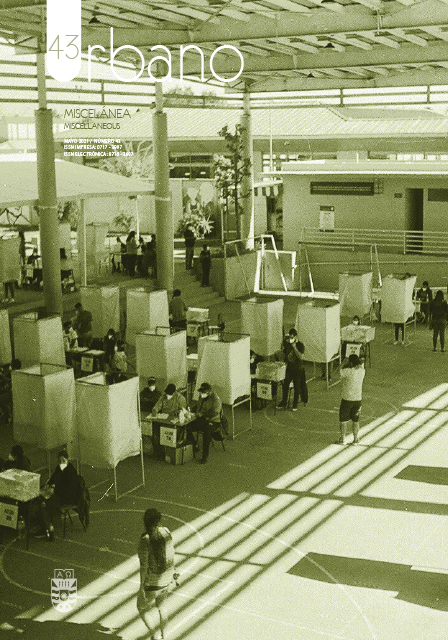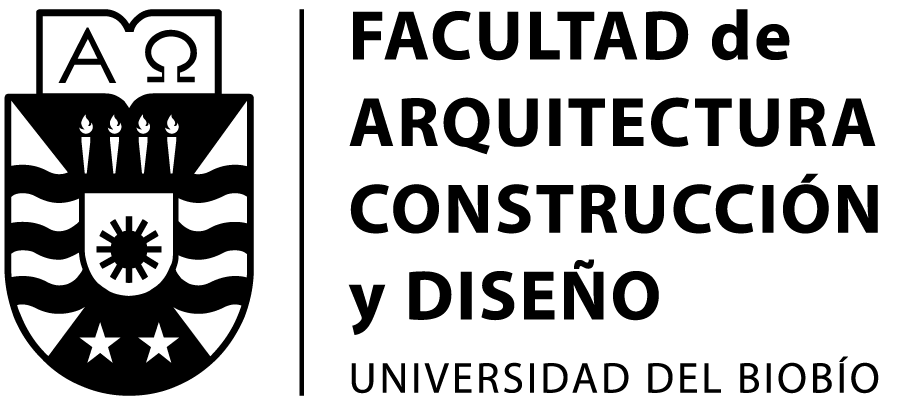Spatial and aspatial indicators: a complementary approach to the quantitative analysis of residential segregation in Managua
DOI:
https://doi.org/10.22320/07183607.2021.24.43.05Keywords:
spatial analysis, social segregation, urban inequality, spatial assimilation, statistics and numerical dataAbstract
The polymorphism of its concept, as well as the complexity of its multiple spatial dimensions, make the measurement of segregation a challenging subject. Which is why, over the years, methodological approaches have been developed, which have produced different indicators to quantify the phenomenon. On the one hand, there are the traditional indicators, which have been criticized for the flaws attributed to them, among which their inability to reveal the way in which the phenomenon is spatially distributed stands out. On the other hand, there are spatial indicators, created from the development of spatial statistics and the availability of Geographic Information System (GIS) software, which are believed to be conceptually and operationally superior. This has led some Latin American researchers to propose abandoning the use of traditional indicators altogether, and to exclusively use the indicators considered as spatial. However, this article shows how, from a complementary approach, spatial and aspatial indicators can be articulated to reveal the different spatial dimensions of residential segregation, and thus reduce arbitrariness in their measurement, representation, and interpretation. While, at the same time, it addresses the limited availability of individual spatial data that characterizes Latin America. The results of the study of socioeconomic residential segregation in Managua, through the Dissimilarity Index and the Global Moran´s Index, show that the city exhibits small-scale segregation, and that the most segregated group in terms of concentration and grouping is the population with a college degree. It also reveals that although spatial indicators seek to capture the inherently geographical nature of residential segregation, their exclusive use fails to address the spatial multidimensionality of the phenomenon and can lead to gaps in its quantification.
Downloads
References
APPARICIO, P., MARTORI, J. Y FOURNIER, E. (2014). Geo-Segregation Analyzer: una herramienta para el análisis de la segregación residencial. International Conference on Regional Science, Zaragoza, España. Recuperado de https:// old.reunionesdeestudiosregionales.org/Zaragoza2014/htdocs/pdf/p1165. pdf
BROWN, L. Y CHUNG, S. (2006). Spatial segregation, segregation indices and the geographical perspective. Population, Space and Place,12(2), 125-143. DOI: https://doi.org/10.1002/psp.403
DOMÍNGUEZ, M. (2017). Las dimensiones espaciales de la segregación residencial en la Ciudad de Mérida, Yucatán, a principios del siglo XXI. Revista Península, 12(1), 147-188.
GARÍN, A., SALVO, S. Y BRAVO, G. (2009). Segregación residencial y políticas de vivienda en Temuco. 1992-2002. Revista de Geografía Norte Grande, (44), 113- 128. DOI: https://doi.org/10.4067/S0718-34022009000300006
GARROCHO, C. Y CAMPOS-ALANÍS, J. (2013). Réquiem por los indicadores no espaciales de segregación residencial. Papeles de población, 19(77), 269-300.
GROISMAN, F. Y SUÁREZ, A. (2010). Segregación residencial e inserción laboral en el Conurbano Bonaerense. Población de Buenos Aires, 7(11), 7-28.
LINARES, S., VELÁZQUEZ, G., MIKKELSEN, C. Y CELEMÍN, J. (2016). Spatial Segregation and Quality of Life: Empirical Analysis of Medium-Sized Cities of Buenos Aires Province. En Tonon, G. (Ed.), Indicators of Quality of Life in America Latina (pp. 201-218). Suiza: Springer International Publishing.
LINK, F., VALENZUELA, F. Y FUENTES, L. (2015). Segregación, estructura y composición social del territorio metropolitano en Santiago de Chile. Complejidades metodológicas en el análisis de la diferenciación social en el espacio. Revista de Geografía Norte Grande, (62), 151-168. DOI: http://dx.doi. org/10.4067/S0718-34022015000300009
MADORÉ, F. (2005). La segregation sociale dans les villes francaises: réflexion épistemólogique et méthodologique. Cahiers de géographie du Québec, 49(136), 45-60. DOI: https://doi.org/10.7202/012108ar
MASSEY, D. Y DENTON, N. (1988). The dimensions of residential segregation. Social Forces, 67(2), 281-315. DOI: https://doi.org/10.2307/2579183
MILLS, W. (1959). The sociological imagination. New York: Oxford University Press.
MOLINATTI, F. (2013). Segregación residencial socioeconómica en la ciudad de Córdoba (Argentina): tendencias y patrones espaciales. Revista INVI, 28(79), 61-94.
MOLINATTI, F. (2021). Segregación residencial en la Región Metropolitana de Córdoba en el nuevo modelo de urbanización en Argentina: Censos 2001 y 2010. Revista Latinoamericana de Población, 15(28), 63-101. DOI: https://doi. org/10.31406/relap2021.v15.i1.n28.3
MOLINATTI, F., ROJAS, E. Y PELÁEZ, E. (2016). Segregación residencial socioeconómica y políticas habitacionales. Una aproximación a partir del Programa “Mi Casa, Mi Vida”. Estudio de caso en la ciudad de Córdoba, Argentina. Novedades en población, 12(23), 1-12.
RAMÍREZ, L. Y FALCÓN, V. (2015). Autocorrelación espacial: analogías y diferencias entre el Índice de Moran y el Índice Getis y Ord. Aplicaciones con indicadores de acceso al agua en el norte argentino. Jornadas Argentinas de Geotecnologías 2015, San Luis, Argentina. DOI: https://doi.org/10.13140/RG.2.2.23036.85126
REARDON, S., MATTHEWS, S., O´SULLIVAN, D., LEE, B., FIREBAUGH, G., FARRELL, C. Y BISCHOFF, K. (2008). The Geographic Scale of Metropolitan Racial Segregation. Demography, 45(3), 489-514. DOI: https://doi.org/10.1353/ dem.0.0019
RODRÍGUEZ, G. (2013). El uso de zonas censales para medir la segregación residencial: Contradicciones, propuesta metodológica y un estudio de caso: Argentina 1991-2001. Revista EURE, 39(118), 97-122. DOI: http://dx.doi. org/10.4067/S0250-71612013000300005
RODRÍGUEZ, J. (2001). Segregación residencial socioeconómica: ¿qué es?, ¿Cómo se mide?, ¿qué está pasando?, ¿importa? Serie Población y Desarrollo, 16. Santiago, Chile: Comisión Económica para América Latina y el Caribe (CEPAL).
RUIZ-TAGLE, J. Y LÓPEZ, E. (2014). El estudio de la segregación residencial en Santiago de Chile: revisión crítica de algunos problemas metodológicos y conceptuales. Revista EURE, 40(119), 25-48. DOI: http://dx.doi.org/10.4067/ S0250-71612014000100002
SABATINI, F. (2015). La ruptura del patrón de segregación y su significado teórico y práctico. En Aguilar, A. y Escamilla, I. (Ed.), Segregación urbana y espacios de exclusión. Ejemplos de México y América Latina (pp. 25-46). Ciudad de México: Universidad Nacional Autónoma de México, Miguel Ángel Porrúa.
SABATINI, F., CÁCERES, G. Y CERDA, J. (2001). Segregación residencial en las principales ciudades chilenas: tendencias de las tres últimas décadas y posibles cursos de acción. Revista EURE, 27(82), 21-42.
SABATINI, F. Y RASSE, A. (2017). Segregación residencial de hogares indígenas en ciudades chilenas. Andamios Revista de Investigación Social, 14(35), 309-333.
SABATINI, F. Y SIERRALTA, C (2006). Medição da segregação residencial: meandros teóricos e metodológicos e especificidade latinoamericana. En Pinto da Cunha, J. M. (Ed.), Novas Metrópoles Paulistas; População, Vulnerabilidade e Segregação (169-195). Brasil: NepoUnicamp, Campinas. Recuperado de: http://www.nepo.unicamp.br/publicacoes/livros/vulnerabilidade/arquuivos/ arquuivos/vulnerab_cap_6_169195.pdf
SIABATO, W. Y GUZMÁN-MANRIQUE, J. (2019). La autocorrelación y el desarrollo de la geografía cuantitativa. Cuadernos de Geografía: Revista Colombiana de Geografía, 28(1),1-22. DOI: https://doi.org/10.15446/rcdg.v28n1.76919
White, M. (1983). The Measurement of Spatial Segregation. American Journal of Sociology, 88(5), 1008-1018.
YAO, J., WONG, D., BAILEY, N. Y MINTON, J. (2019). Spatial segregation measures: a methodological review. Journal of Economic and Social Geography, 110(3), 235-250. DOI: https://10.1111/tesg.12305
Downloads
Published
How to Cite
Issue
Section
License
Copyright (c) 2021 Perla María Sánchez-Uriarte, Ricardo Gómez-Maturano

This work is licensed under a Creative Commons Attribution-ShareAlike 4.0 International License.
The content of articles which are published in each edition of Habitat Sustentable, is the exclusive responsibility of the author(s) and does not necessarily represent the thinking or compromise the opinion of University of the Bio-Bio.
The author(s) conserve their copyright and guarantee to the journal, the right of first publication of their work. This will simultaneously be subject to the Creative Commons Recognition License CC BY-SA, which allows others to share-copy, transform or create new materials from this work for non-commercial purposes, as long as they recognize authorship and the first publication in this journal, and its new creations are under a license with the same terms.![]()























